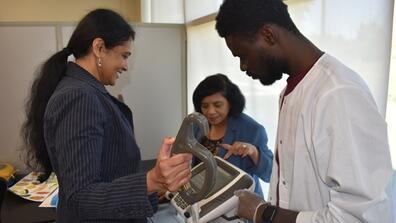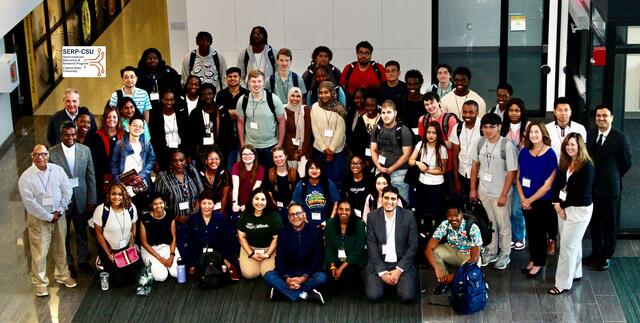
Central State University-led semiconductor internship with Intel and NSF support expands nationally in third year

Program trains a record 46 students at three sites this summer
Central State University proudly leads a summer internship program in semiconductors and microelectronics for the third consecutive year under the Intel-funded Semiconductor Education and Research Program (SERP).
The eight-week program, held on the campus of partnering Wright State University, has grown to a record 46 students — 40 undergraduates and six high school students — receiving training at three host sites: Wright State (39 students), the University of Michigan (four students), and Prairie View A&M University in Texas (three students).

The 2025 Intel-sponsored summer internship program marks a scaling up from previous years — 20 students trained in its inaugural year in 2023 and 39 in 2024. The initiative underscores Central State’s commitment to building a skilled technical workforce supporting Intel’s over $28 billion Silicon Heartland factory in New Albany, Ohio, said Dr. Mohammadreza Hadizadeh, Director of SERP and Professor of Physics.
This year, the program has expanded beyond Ohio to include students from Historically Black Colleges and Universities (HBCUs) nationwide, funded through two new National Science Foundation (NSF) grants.
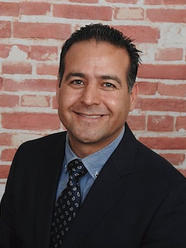
“We are building a national pipeline of STEM talent that not only supports Intel’s workforce needs in Ohio but also contributes to the future of semiconductor and microelectronics in the U.S."
Dr. Mohammadreza HadizadehDirector of SERP and Professor of Physics
“As the lead organization, Central State University has played a pivotal role in the success of this program by providing strategic leadership, coordinating partnerships, and driving key initiatives,” Dr. Hadizadeh said. “CSU has led the development and implementation of the core components of the program, including curriculum and micro-credential development, lab establishment, and summer internships, ensuring alignment with industry needs.”
The program plays a vital role in the nation’s efforts to revitalize domestic semiconductor manufacturing, said Dr. Jose Toledo, Vice President for Research and Economic Development and Director of 1890 Land-Grant Programs at CSU.
“The added backing from federal agencies, including the National Science Foundation, highlights its significance for national security,” he added.
Since the first internships, Wright State has served as the program’s anchor site, with pilot sites added at the State University of New York-Binghamton in 2024 and new national venues in 2025.
Established in 2022 following Intel’s call for proposals, the CSU-led project was among eight selected for SERP funding. CSU and other key Ohio partners — Wright State, Ohio State University, Stark State College, Youngstown State University, and Cedarville University — jointly designed a program focusing on curriculum development, lab establishment, and internships, according to Dr. Hadizadeh.
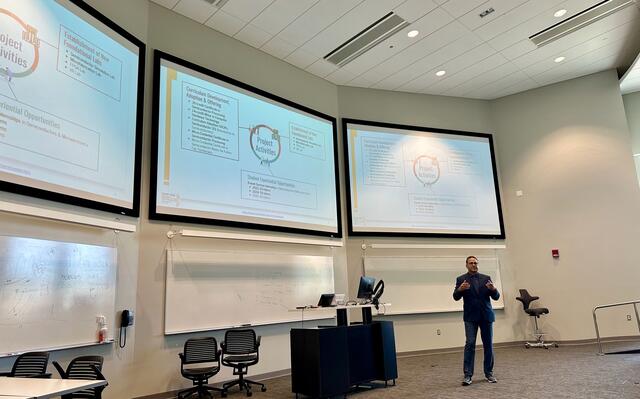
He said the Intel-funded program has trained 105 interns, developed two micro-credentials and an online certificate program in semiconductors, and established two simulation and microfabrication labs. Dr. Hadizadeh added that the program has reached an additional 260 students through semiconductor processing and hardware technology course offerings.
“We are building a national pipeline of STEM talent that not only supports Intel’s workforce needs in Ohio but also contributes to the future of semiconductor and microelectronics in the U.S.,” Dr. Hadizadeh said. “Our students are stepping into a field that underpins virtually every aspect of modern life — from smartphones and healthcare to national security.”
He added: “Semiconductors and microelectronics power the modern world. They’re at the heart of everything, from smartphones and computers to cars, medical devices, and even household appliances. As a society, we feel their impact on nearly every aspect of daily life — communication, transportation, healthcare, entertainment, and more. Simply put, semiconductors and microelectronics are the invisible engines driving our digital and connected lives.”
Intel has contributed about $1.7 million to Central State’s semiconductor education, including summer internship programs. The University has secured an additional $4.2 million in semiconductor-focused NSF funding — $1.8 million directly supporting CSU’s continued expansion.
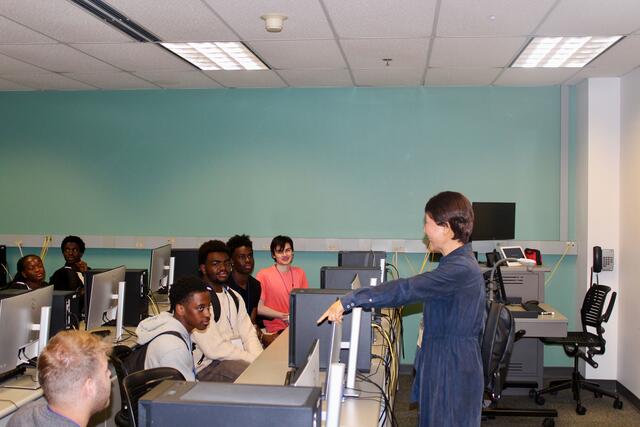
Central State now leads a seven-HBCU consortium through a $3 million NSF award to advance research capacity and inter-institutional collaboration. Ohio’s only public HBCU also plays a leadership role in the HBCU CHIPS Network, co-chairing two national committees.
“Support from Intel has laid a strong foundation for the long-term growth of our program and positioned us to contribute meaningfully to national efforts to build a robust semiconductor and microelectronics workforce,” Dr. Hadizadeh said.
“The future of the Intel Summer Internship Program in Semiconductors and Microelectronics is promising and strategically aligned with the long-term goals of the state of Ohio, as well as national and industry priorities,” said Dr. Arunasalam Rahunanthan, Interim Dean of the John W. Garland College of Engineering, Science, Technology, and Agriculture. “This summer, the program includes three participating universities, demonstrating a scalable model that could expand to include additional institutions in the coming years.”
